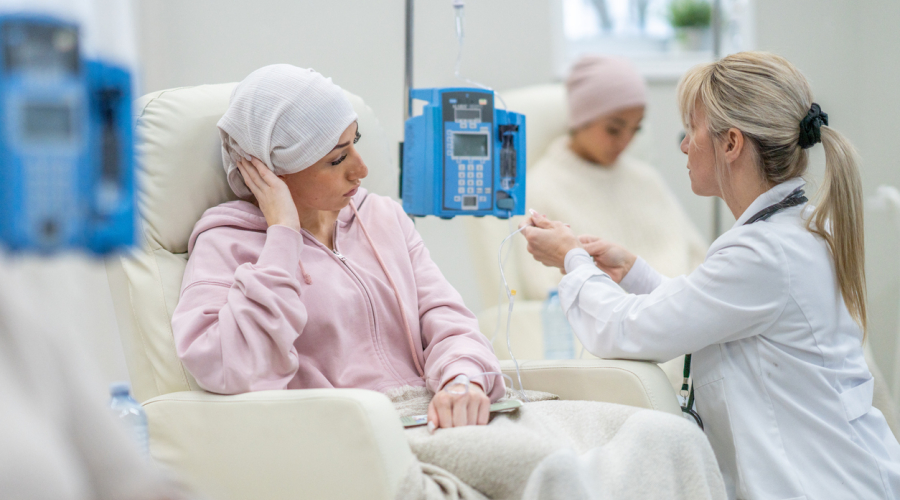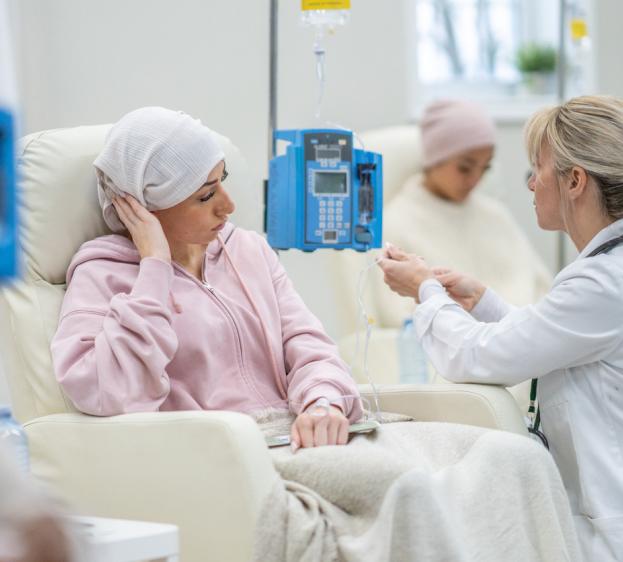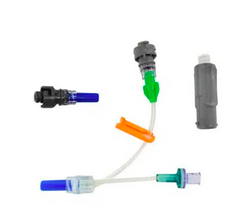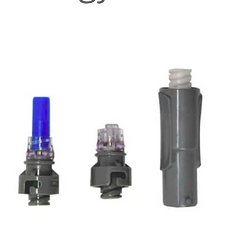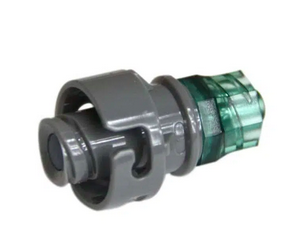Hazardous drugs & protection of healthcare workers
Hazardous drugs constitute a risk for all the healthcare professionals who handle them. The most recent recommendations and regulations strongly encourage those exposed to use appropriate personal protective equipment (PPE) and closed-system transfer devices that significantly reduce the risk of contamination when preparing and administering cytotoxic drugs.
Hazardous drugs constitute a risk for all the healthcare professionals who handle them. The most recent recommendations and regulations strongly encourage those exposed to use appropriate personal protective equipment (PPE) and closed-system transfer devices that significantly reduce the risk of contamination when preparing and administering cytotoxic drugs.
What do we mean by cytotoxic drugs?
Cytotoxic drugs or hazardous drugs are commonly used in oncology wards, in the course of chemotherapy for cancer treatment. They may also be used in other wards such as rheumatology, dermatology and digestive system surgery. Cytotoxic drugs can also be administered at the patient’s home using portable and standalone devices.
Hazardous drugs interfere with DNA synthesis and the metabolism of cancer cells, in order to destroy them. Their mode of action is not selective, so they attack all cells, including healthy cells. Some of these drugs can have mutagenic, teratogenic or carcinogenic effects and be toxic to reproduction.
Occupational exposure to hazardous substances, whether in hospitals or at home, can occur at every stage of their use. Collective and personal protective measures must therefore be taken to reduce staff exposure to such products.
A survey conducted jointly by the French Association of Cancer Nurses (AFIC) and Vygon, involving French nurses working in cancer units, highlighted the urgent need to adopt new practices, as there can be no doubt that the protection of healthcare workers is a top priority.
Risk of cytotoxic contamination
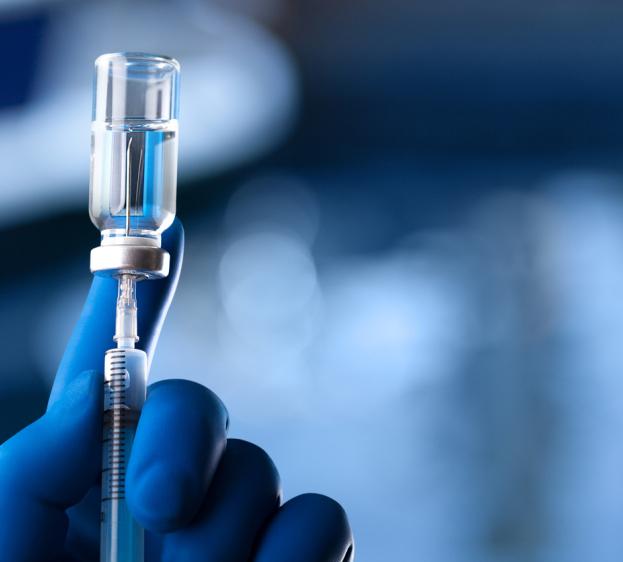
How can you be contaminated by cytotoxic drugs?
The primary source of contamination is skin contact. Healthcare workers can also become contaminated by the respiratory route, through inhalation of liquid or solid aerosols, micro-droplets or dust containing chemotherapy products. Contamination by the digestive route, for example by touching your mouth with your hands or contaminated objects, is another possible source of exposure.
What are the adverse effects of hazardous drugs?
The mutagenic effect of cytotoxic drugs on nurses administering antimitotic drugs was demonstrated in the medical journal The Lancet over 40 years ago (1). To date, more than a hundred studies have highlighted the risk that healthcare workers administering chemotherapy will develop adverse effects due to their exposure to cytotoxic drugs. Those adverse effects may be moderate, acute or severe, leading to genetic modifications in some cases. Scientific studies suggesting an increased risk among nurses exposed to cancer drugs, of developing cancer or experiencing a miscarriage have also been published over the past 20 years (3-4). In Europe, over 7.3 million nurses, male and female, are exposed to hazardous, carcinogenic or mutagenic drugs or drugs that are toxic to reproduction, every year.

[1] Falck K, Grôhn P, Sorsa M, Vainio H, Heinonen E, Holsti LR.Mutagenicity in urine of nurses handling cytostatic drugs. Lancet 1979. [2] Undeger U, Basaran N, Kars A, Gu¨c¸ D. Assessment of DNA damage in nurses handling antineoplastic drugs by the alkaline COMET assay. Mutat Res 1999. [3-4] Sessink PJ, Bos RP. Drugs hazardous to healthcare workers.Drug Saf 1999;Ratner PA, Spinelli JJ, Beking K. Cancer incidence and adverse pregnancy outcome in registered nurses potentially exposed to antineoplastic drugs. BMC Nurs 2010
Which healthcare workers are most exposed?
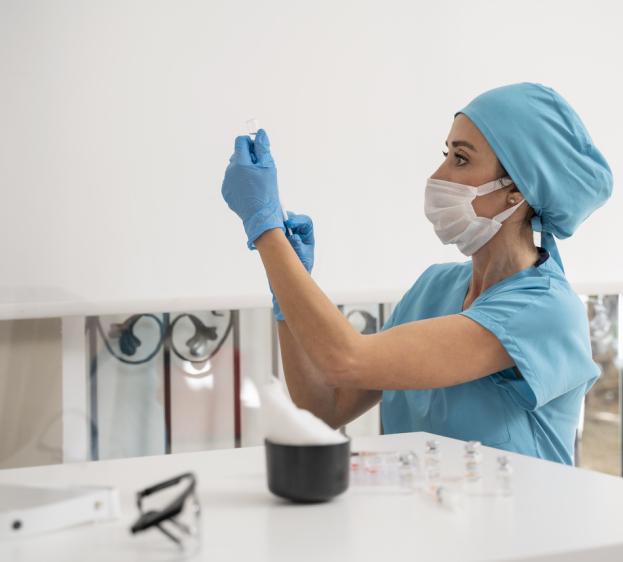
It has been shown that nurses working in outpatient facilities who handle large quantities of drugs during chemotherapy administration have higher levels of genetic damage that other nursing populations.
According to the Occupational Safety and Health Administration (EU-OSHA), these substances have the most dangerous chemical risk factors in the healthcare setting. In 2018, a study conducted among healthcare professionals working in different contexts who were required to handle hazardous drugs reported that nurses working in cancer units were more frequently exposed to cytotoxic drugs than staff working in the unit responsible for preparing and reconstituting those same products. The urine samples of 55 % of the 104 nurses enrolled in the study tested positive for cytotoxic drugs.

Close-up on prevention measures
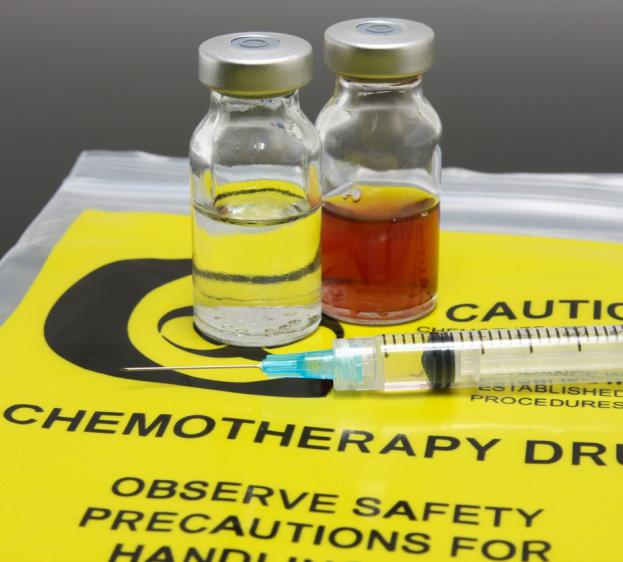
What are the most effective risk prevention measures in the USA and Europe?
Despite the widespread use, in centralized pharmacy preparation units, of personal protective equipment (PPE), isolator units, laminar flow safety cabinets and automatic preparation robots, as well as Closed-System Transfer Devices (CSTD) and Closed Safety System for Administration (CSSA), which aim to limit the risk of inhalation, ingestion and skin contact by pharmacy technicians, the use of such CSTDs/CSSA is very limited, or in some cases non-existent, in outpatient facilities and hospital settings, despite the fact that recognized bodies such as the National Institute of Occupational Safety and Health (NIOSH), the United States Pharmacopeia (USP 800), the American Society of Clinical Oncology (ASCO) and the European Parliament, have all published official texts recommending the use of such systems to reduce the risk of exposure when administering hazardous drugs.
In the USA, USP 800, which came into force on 1 December 2019, made the use of CSTDs/CSSA mandatory for the administration of chemotherapy, although it remains a simple recommendation for the preparation of those treatments.
The recent amendment to European Directive 2004/37/EC (the CMD Directive), and the European recommendation “Guidance for the safe management of hazardous medicinal products at work”, published in April, also recommend, among other protection measures, the use of closed-system transfer devices to reduce the exposure of healthcare workers, “to a level that is as low as reasonably achievable” (the ALARA principle). However, it is apparent that these recommendations are still only rarely applied, and take-up is low in many countries when it comes to CSTDs/CSSA.

Findings of the survey conducted among cancer nurses
Survey conducted by the AFIC (French Association of Cancer Nurses) and Vygon involving 129 French nurses working in cancer wards, between January and April 2020 (92 % women, 8 % men).
-
How would you rate your knowledge of the contamination risks involved in chemotherapy?
-
Nearly 49 % of respondents rated their knowledge of the contamination risks as good or excellent.
-
How would you rate your knowledge of the clinical studies addressing contamination risks?
-
Only 12 % actually based their knowledge on the results of clinical studies. The nursing profession is still not sufficiently committed to evidence-based nursing, preferring to trust institutional protocols - evidence without knowledge - or word of mouth.
-
How would you rate your knowledge of the official recommendations about protection measures for drug administration?
-
52 % of respondents rated their knowledge level as low or moderate with regard to the official recommendations. They require easier access to, and wider dissemination of the relevant information.
-
What difficulties do you face as a nurse exposed to cytotoxic risks?
-
The main difficulties expressed were lack of training in the risks (for 38 % of respondents) and lack of information (42 %). The other difficulties described primarily concerned:
- no reporting of the latest articles on the issue,
- no specific monitoring by the occupational health doctor,
- risks related to the administration of chemotherapy during pregnancy and the reproduction period,
- handling of oral treatments,
- management of excreta,
- insufficient knowledge about safe equipment,
- failure by some facilities to provide sufficient protective equipment.
-
What practices do you adopt when administering chemotherapy?
-
Most respondents confirmed they wore PPE when administering chemotherapy, and complied with good practices; however, many still do not protect themselves adequately or rarely use CSTDs/CSSA to protect themselves against chemical risks. However, they were all aware of the potential risk of contamination through inhalation, ingestion or skin contact at every treatment stage.
In addition to the question of protecting healthcare workers handling cytotoxic products, this questionnaire also aimed to address the handling of drip-feed lines. Concerning the systematic flushing of drip-feed lines after treatment, the responses showed that flushing protocols were generally well applied. However, given the lack of any baseline scientific study, the flushing volumes tended to vary from one facility to another and/or one operator to another, and did not guarantee total elimination of cytotoxic molecules from the nozzle after flushing, as shown by a recent study by the pharmacy team at the Toulouse Oncopole [15].
-
What conclusions can be drawn from this survey?
-
Analysis of this questionnaire shows how far we still have to go to make the administration of cytotoxic drugs safe for nurses. The way forward involves widespread training and information, incorporating the findings of clinical studies on this major issue which affects daily practice. The regulations also have to match occupational health and safety needs. Going forward, it is essential to keep this issue on the agenda in order to bring in the required changes.
-
In this context, what is the mission of the expert group?
-
Cytoprevent is a working group that brings together international experts from different specialties affected by the risks of exposure to toxic substances, chaired by Paul Sessink. Cytoprevent has set itself the task of helping to determine the major points for reflection about these issues, suggesting concrete actions aimed at accelerating awareness among local players, and prompting the European community to reinforce its regulatory provisions in these areas, to bring them into line with the USA, which is way ahead of the rest of the world. With this in mind, the Cytoprevent group recently lobbied several MEPs to adopt a new acronym - CSSA, for Closed Safety System for Administration - in regulatory texts and everyday usage, to make it easier to identify and qualify closed-system devices for the administration of cytotoxic drugs, as opposed to the term “closed-system”, or CSTD, which can have different meanings and is a potential source of confusion for healthcare workers and lawmakers.
Our medical devices for safe administration of cytotoxic solutions
How the Qimono range guarantees a safe connection:
- Screwless connection
- Connects to standard Luer devices
- Maintains a direct flow pathway
- Resistant to aggressive solvents
- Creates a barrier against cytotoxic drugs
- Easy disinfection of connectors
- Safe from A to Z

